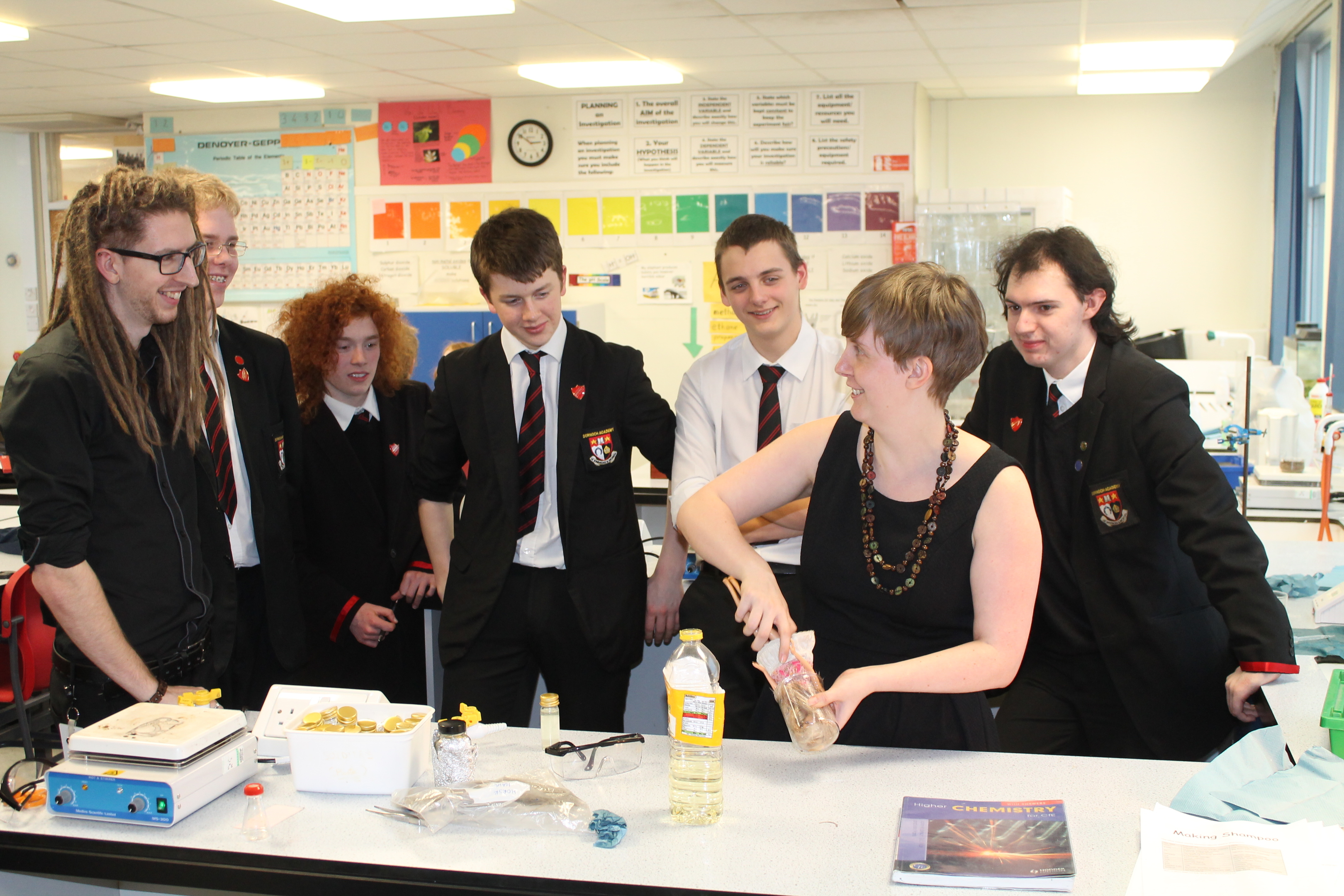A north secondary school was visited by members of an esteemed scientific society after pupils learned to make their own shampoo.
Sixth year chemistry students at Dornoch Academy were met by representatives from the Royal Society after their work was showcased in a blog.
The Royal Society, based in London, is a fellowship of the world’s most eminent scientists and is the oldest scientific academy in continuous existence.
During the visit the pupils demonstrated how to distill essential oils, analyse chemical components using chromatography, a process which separates mixtures, and make shampoos which were tested on a doll’s hair.
The Smells Like Teen Shampoo project started in 2013 when the school was awarded a Royal Society Partnership Grant of £2,900 to fund a project to give students direct experience of research with a practising scientist.
The role was fulfilled by flavour expert Dr James Pryde, a technical manager at the Glasgow based brewery, Whyte and Mackay.
Once the shampoo was made it was tested for pH, ability to clean and the ability to foam.
Following the project, which was finished in May this year, the secondary school had its highest increase in students taking advanced highers in chemistry.
Chemistry teacher Adrian Allan, who teaches the sixth year class, said: “It was quite an unusual project and I think that’s why it stood out for the Royal Society.
“Recent curriculum changes have meant taking a lot of the boring industry stuff out of the classroom and putting in kitchen, fragrance and skincare chemistry. In a way this makes the contents a bit more interesting for the pupils and it has also helped me with classroom experiments.
“Out of the 18 Higher students last year, 11 went on to do advanced higher and normally we get about two to four people. The changes have only been in place for a year but I think it is probably going to make a big difference.”
